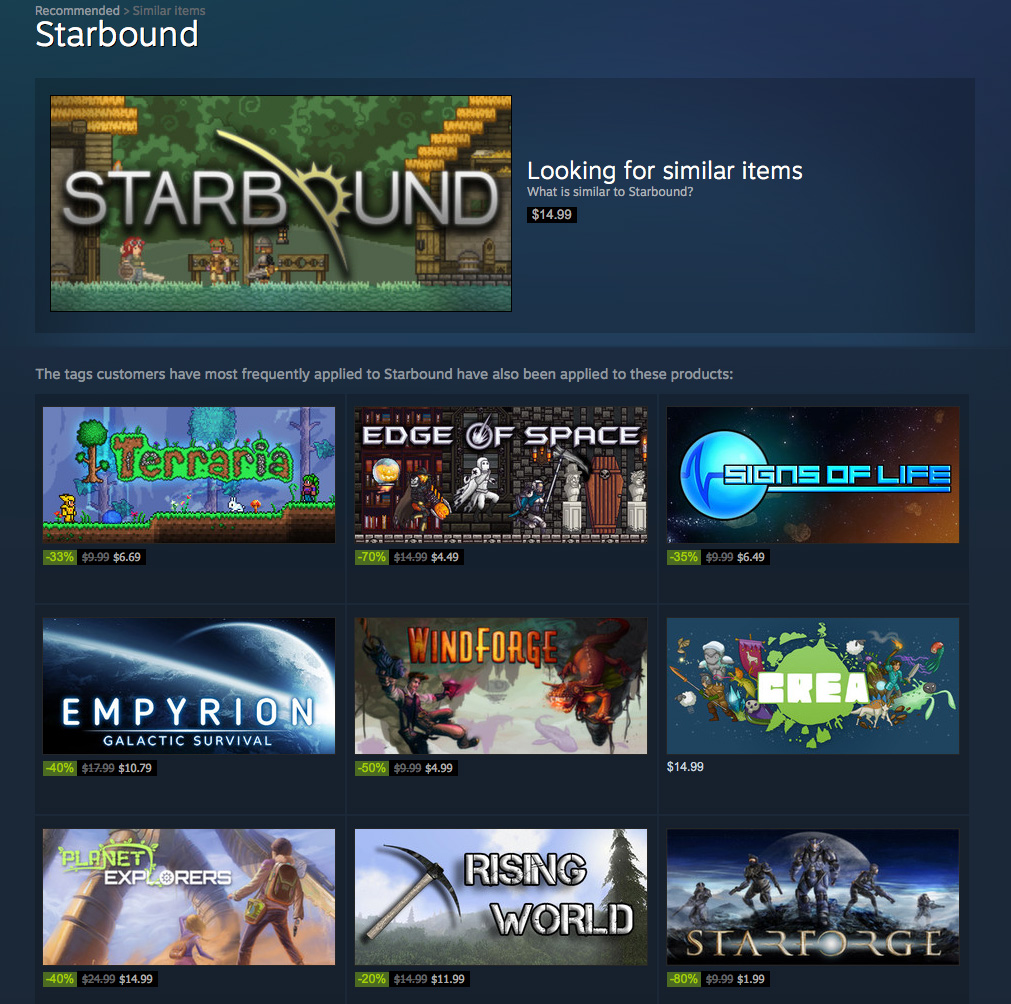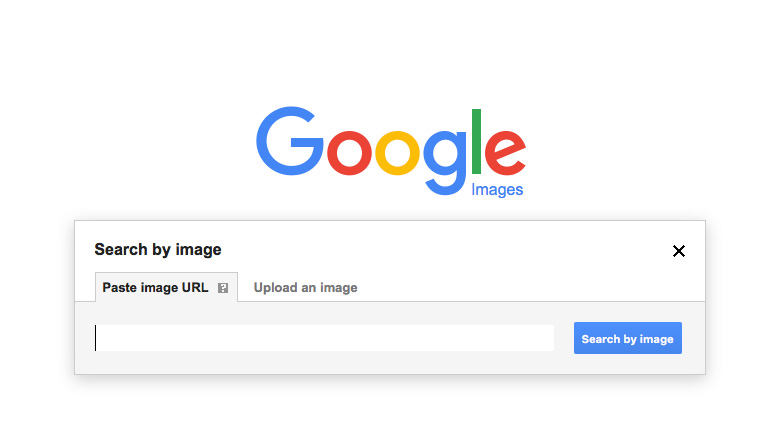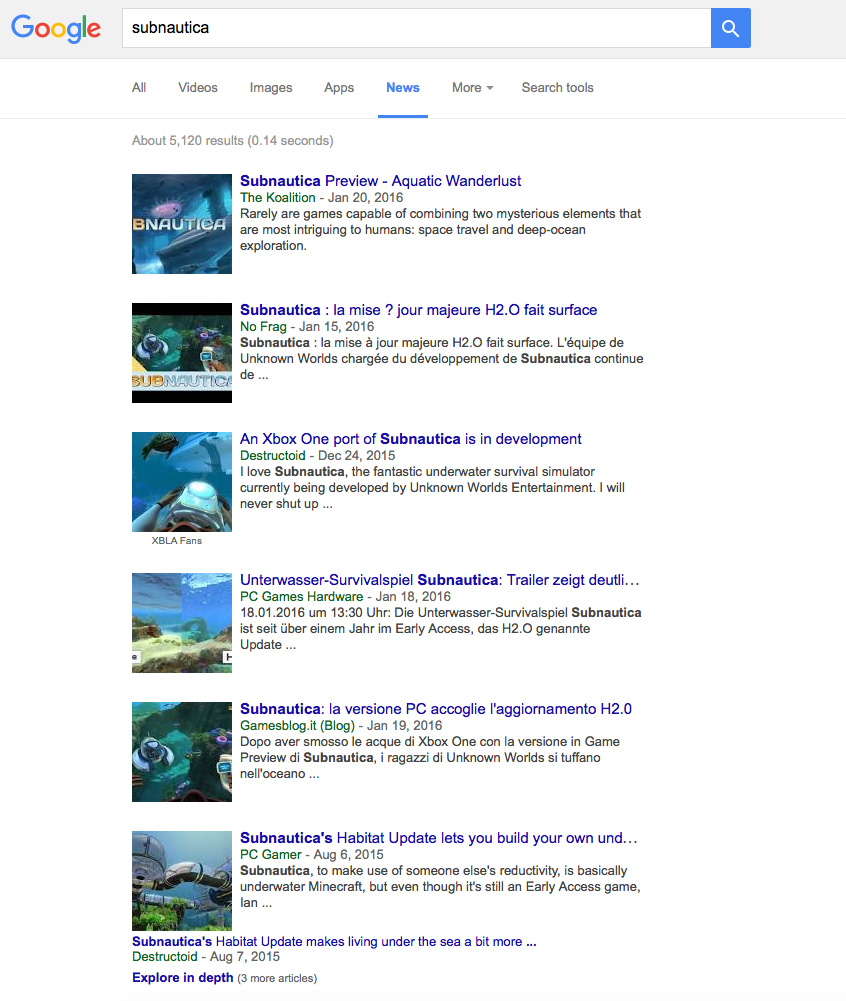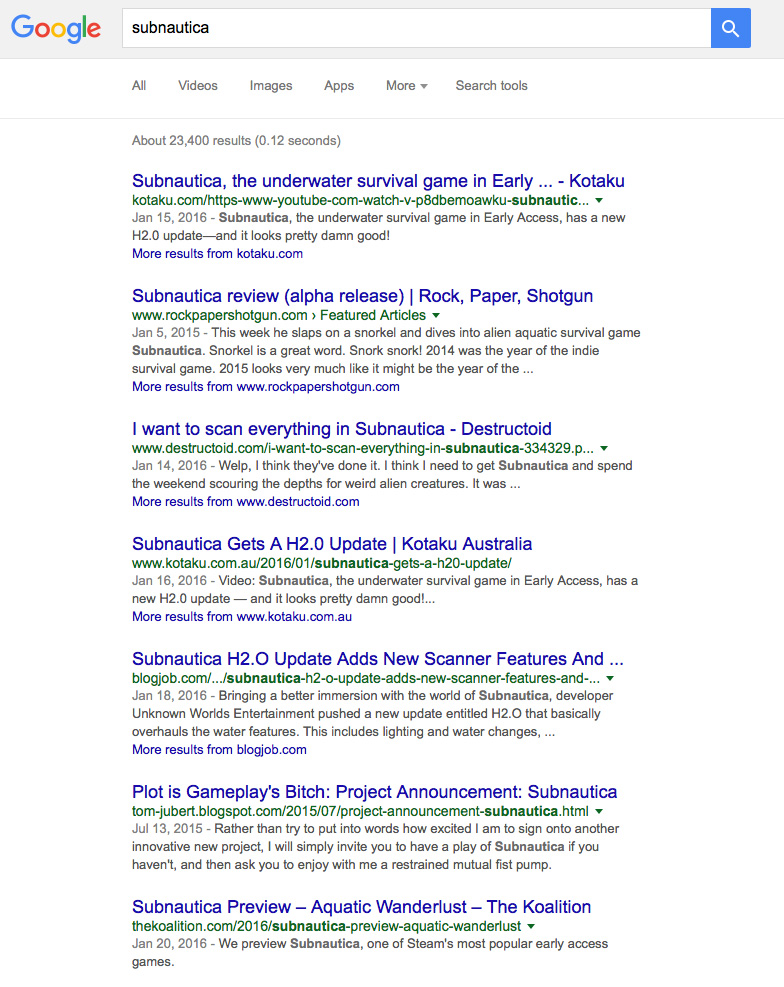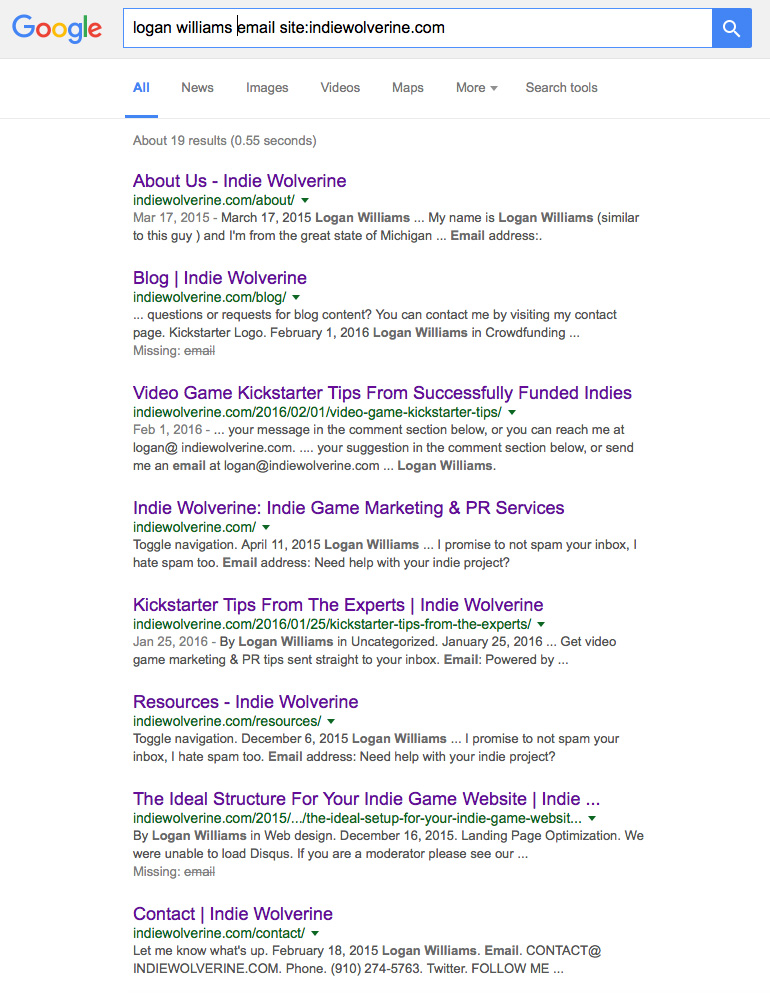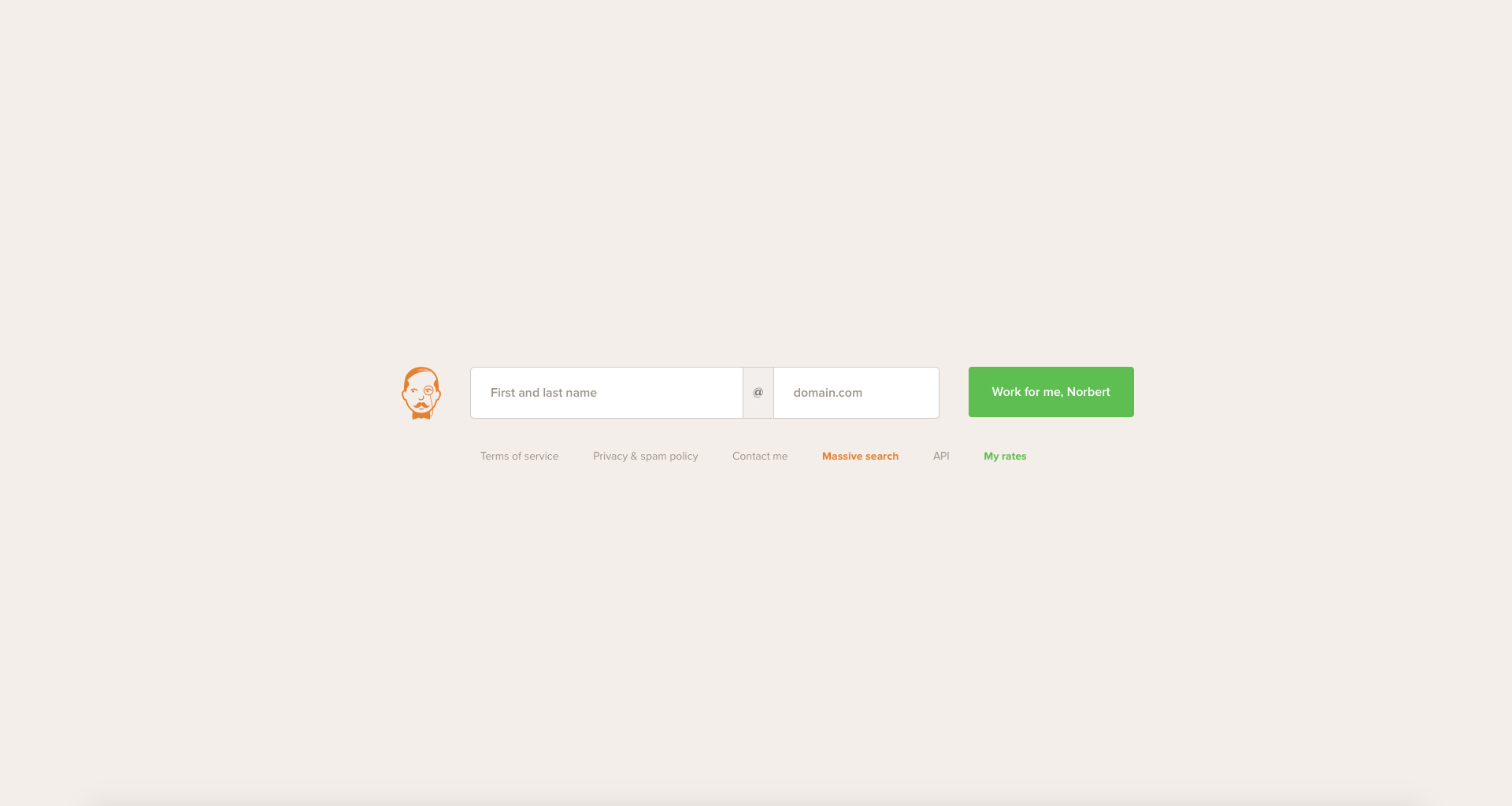Finding press for your game can be a major headache and a seemingly fruitless task if not done correctly. Let’s stop spamming random press with templated emails in hopes that 1% of the thousands of emails stick and you get *some coverage. Today, I’m going to show you a step by step process to finding relevant press, how to build a press list and how to send properly formatted emails that give you the best chance to get a response.
To start, this guide is heavily inspired by a post written by Tim Ferriss titled, Hacking Kickstarter: How to Raise $100,000 in 10 Days. That article is aimed at helping people successfully fund Kickstarter with a very good step-by-step process. It’s an excellent guide and I strongly suggest you check it out after reading this post (even if you’re not interested in crowdfunding). The difference between Tim’s guide and mine is that my guide is aimed at getting the attention of press, not for Kickstarter coverage, but for game coverage. The process has similarities, but I’ve modified it with ways that I’ve gotten attention from press in the past.
Why is Press Coverage Important?
We all know that getting coverage from streamers and YouTubers is incredibly important and that importance doesn’t seem to be going anywhere. On the flip side, it seems like your old-school traditional gaming sites are dying and nobody visits them anymore, right? Wrong. Your monster sites like IGN, Gamespot, Polygon, Kotaku etc are definitely not going anywhere (in fact, IGN currently holds the position of the 182nd top website in the United States!), but getting coverage from theses sites can be damn near impossible for your new indie game. Unless you have someone on your team who is already a celebrity to some extent, or you know someone who knows someone, getting coverage from the monsters isn’t likely. However, what about the other guys? Is there value in the mid-tier niche gaming site space?
Let’s take a look at a site like MMOhuts.com and compare it to a monster site like IGN. IGN currently has 3,383,432 Facebook likes and 3.46 million followers on Twitter, while MMOhuts has just 23,886 likes on Facebook and 3,853 followers on Twitter. When you look at IGN’s social dominance, it makes a site like MMOhuts seem like a waste of time. However, keep in mind that IGN is a variety gaming site. They cover seemingly every major game for every major platform. They also cover comics, anime, TV show, Movies and more. MMOhuts focusses on free MMO and MMORPG games, so if you’re working on an MMO type game, your audience is waiting at a site like MMOhuts. In fact, you might even see more long-term engagement from a niche site vs a larger variety site.
The same thing can be said for getting coverage from YouTubers and Streamers. If you get covered once by a major variety streamer, you might not see a noticeable spike in sales. However, if you were to get long-term coverage from a streamer that likes to play a certain genre game, you might see a huge long-term positive trend in sales.
Also, in the past, I’ve managed many player surveys and from these surveys, I’ve found that yes, many players decide to purchase a game after they see their favorite streamer or YouTuber play it. However, I’ve also noticed that many players research game articles when they’re in the consideration stage of their buyer journey, so if you were to just have coverage from YouTube and Twitch, you may be missing out on a chunk of players that rely on long-form articles by gaming journalists to help them decide on a purchase or not. Having a combination of strong press coverage and streamer/YouTuber coverage is the sweet spot.
Step 1: Find Similar Games
Now that we understand why we need to reach out to press, let’s begin the process of actually doing so. I always start by looking at similar games. Even if your game isn’t out yet, you can still find similar games. What makes a game similar? You decide. It could be by genre, art style, core mechanics, or whatever you decide makes it similar. If you’re having trouble finding many similar games, you can make Steam do the work for you. To do this, go to http://store.steampowered.com and search for one similar game (if your game is in the marketplace, search for your game).
Once you land on the game’s page, scroll down to where it says “More like this” and click the link that says “See all”.
There you have it! Steam has done the work for you.
Step #2: Find Press That Have Covered Similar Games
Now that you’ve gathered a group of similar games, we need to find press that have covered them. This can be done many different ways. I’ll go over 3 ways I’ve done this.
1.) Google Image Search
Google Image search is an awesome way to find press mentions (also, if you’re trying to find sites that are listing cracked versions of your game, this is a great tool as well). To start, you need to find images that gaming sites may use in their articles. We can do this by downloading images from Steam App page slideshows (see image below).
If the studio behind the game you’re trying to steal press from has a press kit (and they should!), you can simply download an image or two from their press kit and more forward. Once you have some images, all you have to do is go to images.google.com and click “Upload an image”, then upload an image of your choosing. Once the image is uploaded, Google will show you all sites that have included similar images in their posts.
2.) Google News Search
Staying with Google, we can simply search in Google News for “game name”. This is a really quick way to get a list of press mentions. If the game you’re researching is well known enough, you can even sort by date and see what your competitor’s are doing to earn press.
3.) Google Blog Search
Google blog search was a service used by Google from 2005 to 2011 that allowed users to specifically search for blogs using the Google search engine. In May 2011, Google announced that it’s Google Blog Search API would be deprecated and was shut down. Knowing this, why would I recommend something you can’t use? Well, you still can. To use Google’s blog search, visit https://www.google.com/webhp?tbm=blg&gws_rd=ssl. Once on this page, simply search for your competitor’s game name and party like it’s 2011.
Step #3: Build Press List
While searching for press, you need to first find out if they have a good enough following. If you know the site and their following, you can skip this process (a great example would be Rock, Paper, Shotgun). However, if you come across a gaming site that mentions a similar game that you’ve never heard of, you can quickly see if they have a following by checking out their Facebook and Twitter pages. While looking over their Facebook and Twitter pages, don’t just look at follower size, look at engagement. It doesn’t do anyone good if a site is promoting your game to a bunch of people that don’t care. Once you feel like you’ve seen enough data, you can then add them to a press list. You already have one of those, right? If not, you can use this one https://docs.google.com/spreadsheets/d/1xWsLnXgIvmBokMA28YlJ3Z7TNWHR3MbGGYWoU3AT0nM/edit?usp=sharing.
To fill out the press list linked above, we need the following information:
- Publication Name
- Publication URL
- Writer First Name
- Writer Last Name
- Writer Email
- Publication Facebook Likes Total
- Publication Twitter Followers Total
- Link to Related Game Article
Step #2 shows you how to find publication name, URL, writer first name, last name and the actual related game article. While researching the publications social presence, you will naturally find Facebook likes total and Twitter followers total. The only thing left to find is the all important writer email. There are many ways to find someone’s email. Below is x ways you can find someone’s email.
1.) Search Google
This is usually the first thing anyone does when they want to find something, so we will start here. To search for someone’s email, you could search something like “first name last name email publication name” or “first name last name email site:publicationURL” (by using site:publicationURL, you’re limiting your search to results that are only on the publication’s domain).
2.) Use The Magic of VoilaNorbert.com
Voila Norbert is straight magic if you ask me. Simply paste in a writer’s first name and last name, then paste in the domain and voila! While Norbert has done wonders for me, he also can’t work miracles, so don’t be surprised if he gets stumped from time to time.
Visit Voila Norbert here: voilanorbert.com. I recommend that you bookmark Norbert as soon as possible.
3.) Check Social Descriptions
Many times, writers will include their email in their Twitter bio, so that’s always a good place to check if you get stumped.
4.) Guess!
Just like the title says, you can guess a writer’s email and sometimes you’ll be right! Some common email structures are:
- [fname]@[publicationURL]
- [fname.lname]@[publicationURL]
- [firstletteroffirstnamelname]@[publicationURL]
Examples:
- Logan@IndieWolverine.com
- Logan.Williams@IndieWolverine.com
- LWilliams@IndieWolverine.com
Step #4: Establish Relationships
In my opinion, this step is crucial. Building relationships can greatly increase your chances of being covered by publications that you might otherwise have an incredibly low chance of being covered. If you skip this step, you’re really lowering your odds for coverage. The goal here is to build long-lasting and friendly relationships with press. Not just for the coverage possibilities, it always helps to network.
Consider this, many developers will mass email a broad list of writers and editors and usually end up with very little (or no) press. If you were to build helpful relationships with writers in a small pocket group, your chances are much higher to get coverage and you can possibly get introductions to further press if you ask nicely. Basically, the goal here is to show press that you care. You not only care about making their life easier, but you also understand that they are being asked for coverage by 100s or 1000s of other developers just like yourself.
Some of the things I would recommend are:
1.) Follow all writers/editors that you added to your press list in step #3
2.) Actually read some of their articles (who knows, you might not like their writing style and end up not wanting them to cover your game)
3.) Look for ways to get introduced. If you notice someone you know is a friend of a writer you want to get in touch with, reach out to your friend and ask
4.) If you go to conferences, be social and network. You might meet some helpful writers or people that can introduce you to people you want to cover your game
This step doesn’t mean that you should comment on every social post for every single member of the press on your press list. Instead, look for opportunities to get introductions and be friendly and helpful if you ever spot an opportunity to help a writer out. If you actually read articles by gaming writers and you find a particularly insightful one, share it on Twitter and mention the writer in your post. Let them know you care about their work.
Another way to look at this is by using the 80/20 rule (the same rule mentioned in Tim Ferriss’s Kickstarter post). 20 percent of stories are most likely going to equal 80% (or more) of your press results.
Step #5: Reach Out
Reaching out to press via email has been covered all over the web. Some excellent resources are below:
- How to Contact Press – Pixel Prospector
- Getting Your Independent Game Noticed – GDC Europe 13 – Mike Rose
- Getting Press – Alexis Santos
The process is pretty simple. You start with the subject line. It shouldn’t be too long and should include your game name and possibly the hook. You don’t want to ramble, but you do want to get to the point. Once your subject line is in place, you want to start your email by addressing the writer by their name. If you only find an info@ or another sort of general email address, look harder for a personal email.
Next, provide the value. What is the hook or story that is valuable enough to warrant an article. If you’re working on a Kickstarter campaign, that is great, but it’s not unique and doesn’t warrant an article. Talk about your game’s story, or if your game has a controversial subject, focus on that. Just give the writer something to write about. Their job is to write articles that are interesting enough for people to read them. A writer’s job is not charity work, so don’t expect to get coverage for your game because it exists.
Once your story or whatever the hook is, is out of the way, leave a link or Steam code for your game. Don’t ask if they want a copy of your game, just give it to them (the same can be said for streamers & YouTubers). Also, if you have a good game trailer, link to it. Game trailers are awesome, because it’s really easy for the press to drop your trailer into an article and write a few sentences about it and hit publish. It’s almost like you’re doing the work for them.
Also, leave any other helpful links (links to your website, social accounts, screenshots etc). If you have to leave a press release, leave it at the bottom of your message. Once again, don’t ramble and try to space your words, so it’s easier to skim through. If you list out a few unique features, list them in a bulleted list.
Basically, be human and respect other people’s shortness of time. Try to make writer’s lives easier and give them something good to talk about. I highly recommend that you check out the above linked talk by Mike Rose, because he lays it out really well (and he comes from the editor side of things) and he includes stats to back everything up.
If you want to track and see if certain members of the press are actually looking at your emails, you can use an extension from Hubspot called, Sidekick.
Step #6: Follow Up
Once you’ve sent out all of your emails, it’s time to track your responses. You can do this by using Google Alerts. Also, if you use the extension linked above, you’ll be able to see if people aren’t opening your emails. If that is the case, you can follow up a week or so later and track the email again. I wouldn’t follow up too much, because you don’t want to create a bad stigma around your name.
If you do notice that someone does right an article for you, if you like the article, don’t forget to thank them for it. You can do this via email, or you can leave a comment. Everyone likes to be appreciated.
After your wave of press has died down, you should repeat the steps above. There are many things that can warrant more coverage for your game. This can include medium-major size updates, milestones hit, community related news, company growth and more. Basically, anytime something happens with your game or studio that you believe is worth an article, you can reach out to the press. However, make sure you look at it on their end. Do they really care about your new update that adds 4 new hats? Will they benefit from covering this kind of update?
Mind Map
Below, is a mind map of this post. Filip Wiltgren of wiltgren.com was helpful enough to create it and share it with me. Thanks again, Filip!
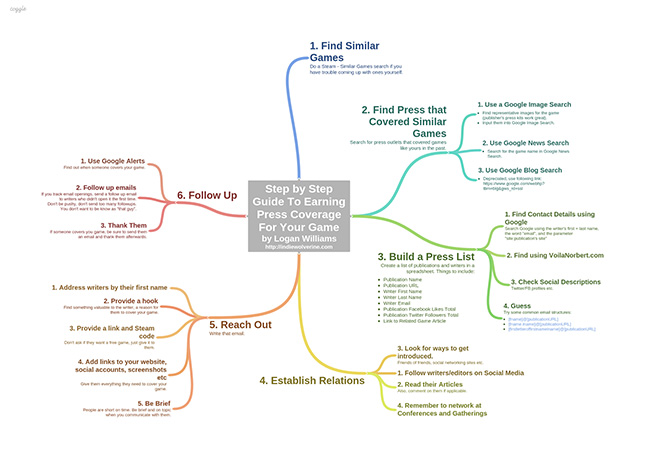
Go Earn Some Press!
Earning press really is just a game of you creating something newsworthy and finding appropriate outlets that can benefit from your news. Marketing and PR is all about trading value. You create an excellent product and share it with publications that can make money off the traffic they earn from covering your product. This applies to all publications big and small. Some tactics can become confusing, but if you can just remember the basic reasoning behind why you’re trying to earn press, the process should become much easier to understand.
If you have any questions, or want to add on to what is in this post, feel free to do so in the comment section below.




